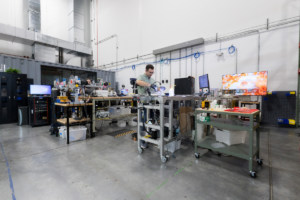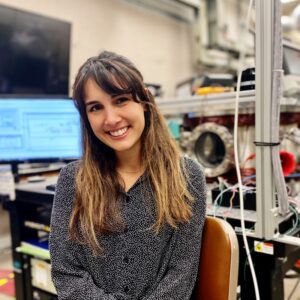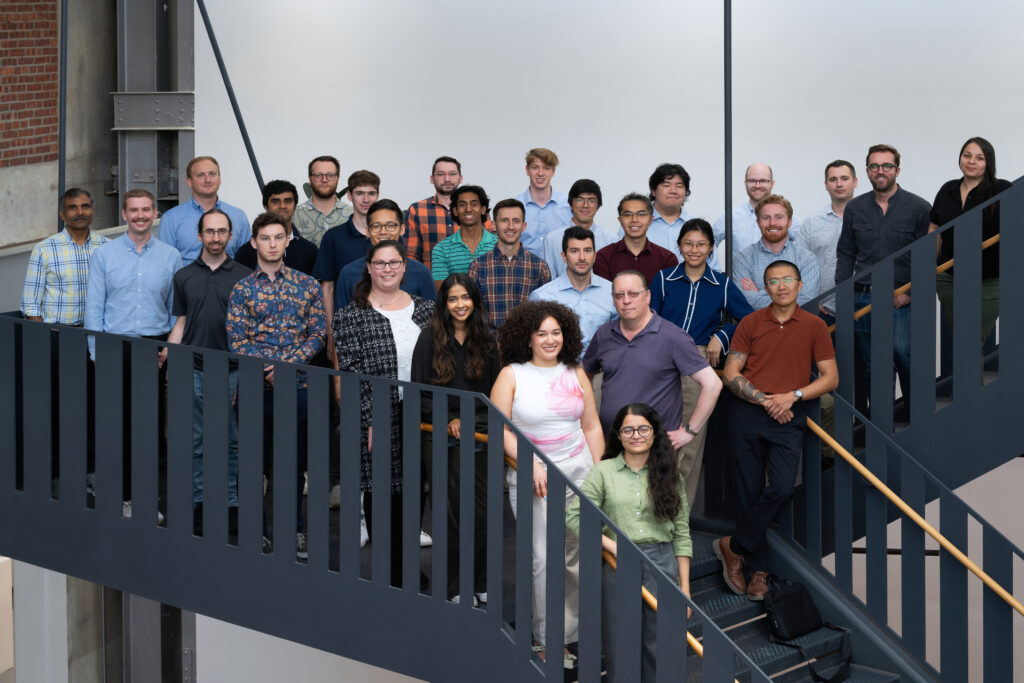Thea Energy
About
 Thea Energy is building an economical and scalable fusion energy system utilizing arrays of mass-manufacturable magnets and dynamic software controls. Commercial fusion energy can uniquely provide a limitless source of zero-emission power for a sustainable future. Thea Energy is leveraging recent breakthroughs in computation and controls to reinvent the stellarator, a scientifically mature form of magnetic fusion technology. Thea Energy was founded in 2022 as a spin-out of the Princeton Plasma Physics Laboratory and Princeton University, where the stellarator was originally invented. Thea Energy is currently designing its first integrated fusion system, Eos, based on its planar coil stellarator architecture which will produce fusion neutrons at scale and in steady state.
Thea Energy is building an economical and scalable fusion energy system utilizing arrays of mass-manufacturable magnets and dynamic software controls. Commercial fusion energy can uniquely provide a limitless source of zero-emission power for a sustainable future. Thea Energy is leveraging recent breakthroughs in computation and controls to reinvent the stellarator, a scientifically mature form of magnetic fusion technology. Thea Energy was founded in 2022 as a spin-out of the Princeton Plasma Physics Laboratory and Princeton University, where the stellarator was originally invented. Thea Energy is currently designing its first integrated fusion system, Eos, based on its planar coil stellarator architecture which will produce fusion neutrons at scale and in steady state.
At DIII-D
 At DIII-D, Thea Energy collaborates with UCSD to evaluate renewable, low-Z plasma-facing concepts as part of its materials research efforts. For this project, boron pebbles will first be fabricated into a rod and then inserted into the DIII-D divertor. Heat carried by plasma particles is expected to melt the binder and release boron pebbles, allowing them to flow across critical plasma-facing components.* The first boron pebble experiment will be performed using DiMES to help validate this first-wall design concept for a stellarator, which is envisioned to survive long term in high heat and particle flux environments and to improve fusion fuel recovery. The project is supported by Thea Energy’s physics and engineering staff, including one materials science intern, as part of an ongoing collaboration funded by an INFUSE DOE award.
At DIII-D, Thea Energy collaborates with UCSD to evaluate renewable, low-Z plasma-facing concepts as part of its materials research efforts. For this project, boron pebbles will first be fabricated into a rod and then inserted into the DIII-D divertor. Heat carried by plasma particles is expected to melt the binder and release boron pebbles, allowing them to flow across critical plasma-facing components.* The first boron pebble experiment will be performed using DiMES to help validate this first-wall design concept for a stellarator, which is envisioned to survive long term in high heat and particle flux environments and to improve fusion fuel recovery. The project is supported by Thea Energy’s physics and engineering staff, including one materials science intern, as part of an ongoing collaboration funded by an INFUSE DOE award.
Dr. Angelica Ottaviano
 Dr. Angelica Ottaviano is the manager for plasma-material interactions at Thea Energy, where she leads the investigation and development of plasma-facing materials for the first walls and divertors of a planar coil stellarator. Angelica has an engineering research background in studying advanced materials for plasma-electrodes, edges of fusion devices, electric propulsion systems, and spacecraft surfaces, and has worked with both the DOE and the DOD on plasma-based applications.
Dr. Angelica Ottaviano is the manager for plasma-material interactions at Thea Energy, where she leads the investigation and development of plasma-facing materials for the first walls and divertors of a planar coil stellarator. Angelica has an engineering research background in studying advanced materials for plasma-electrodes, edges of fusion devices, electric propulsion systems, and spacecraft surfaces, and has worked with both the DOE and the DOD on plasma-based applications.
The collaborative UCSD and DIII-D pebble-rod project is also supported by Dr. Santhosh Kumar, who is the director of stellarator systems at Thea Energy, and Lucy Tang, a fusion engineer with expertise in divertor design using field-line tracing and magnetic topology simulations.
Joining the Thea Energy Team
To learn more about open roles at Thea Energy and how to apply, visit: https://jobs.lever.co/thea.energy.

*Reference: Martinez-Loran, Erick, et al. “Development of pebble-based extruded carbon rods for extreme plasma heat flux environments.” Journal of Applied Physics 133.24 (2023).
